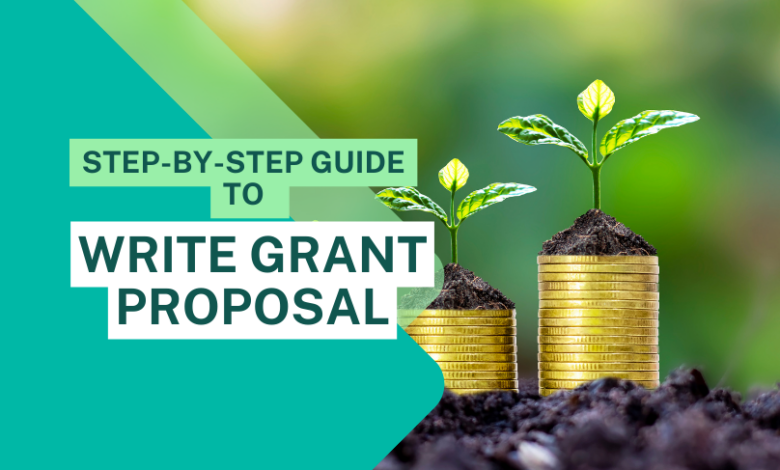
Writing a grant proposal can be very confusing at times: How to write a grant proposal? Where to start? and What format you should follow? are a few common questions. Securing a grant may be a tedious process, but the most satisfying feeling is once your grant is accepted.
I have had the privilege to work with many researchers with whom I could submit grant proposals, and ultimately, they were accepted. With the help of this article, I want to guide you all on the perfect path towards writing a grant proposal step-by-step.
A grant proposal is a document that requests financial support or funding from government agencies, foundations, or organizations, which are often applied by researchers, professors, or non-profit organizations.
When applying for any grant, you might have come across an RFP (request for proposal), which asks the individual or organization to submit their grant proposal. RFP contains details about the grant that would be received upon the successful selection of the applicant. Details such as eligibility, requirements, goals and objectives, budget, time frame, evolution criteria, etc. are mentioned.
As an applicant, you should thoroughly go through this document called RFP. Referring to the RFP, and the guidelines mentioned in it, you would be designing your grant proposal around it. In the further section of this article, I will show you the format and structure that you should follow to write the proposal. To make it even easier for you I have attached a format of a grant proposal that you can download.
Contents
- 1 How to Write a Grant Proposal for Funding
- 1.1 1. Executive Summary
- 1.2 2. Overall Strength and Suitability of the Applicant
- 1.3 3. Context Setting or Background
- 1.4 4. Experience and Background of the Applicant
- 1.5 5. The Reason Why the Host Institution is Interested in the Scheme
- 1.6 6. Support (Expertise/ Infra) Offered By the Host Institution
- 1.7 7. Targets and Deliverables for the Project Period
- 1.8 8. The Action Plan for Implementation of the Project
- 1.9 9. Experience and Background of the Proposed Team, Board, and Other Officials
- 1.10 10. Number and Diversity of Partners Proposed
- 1.11 11. Location, Benefits, and Suitability of the Implementation Center
- 1.12 12. Proximity to Other Similar Projects / Centres (if any)
- 1.13 13. Sector Focus (if any)
- 1.14 14. Usage of the Grant-In-Aid
- 1.15 15. Sources of Financial Sustainability (if necessary)
- 1.16 16. Budget
- 2 Overall Thoughts
How to Write a Grant Proposal for Funding
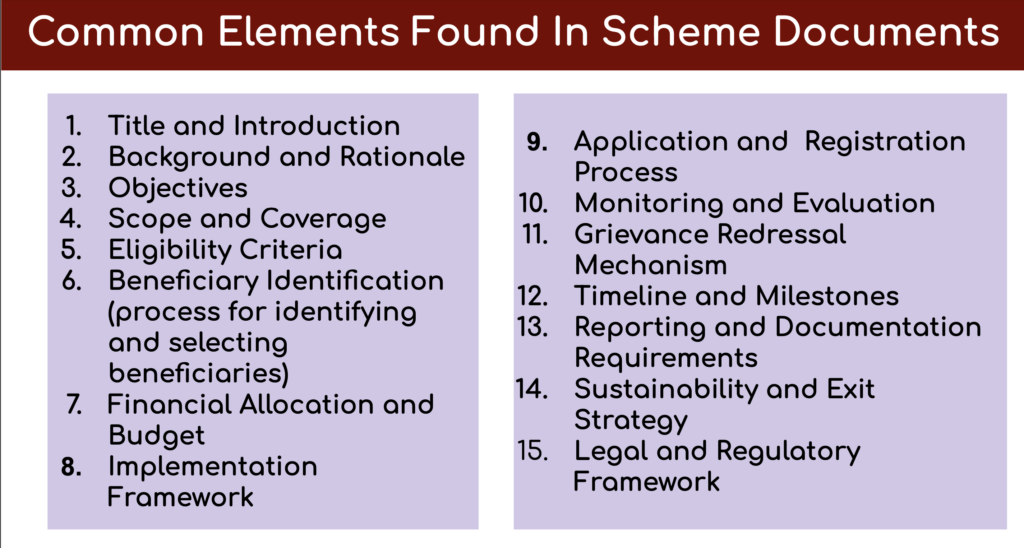
Once you have gone through this detailed document, you will do your study regarding the title and objectives. Then you can start writing your grant proposal and its content could be as follows –
- Executive Summary
- Overall Strength and Suitability of the Applicant
- Context, Setting or Background
- Experience and Background of the Applicant
- Reason Why the Host Institution is Interested in the Scheme or Grant
- Support (expertise/ infra) Offered By the Host Institution
- Targets and Deliverables for the Project Period
- The Action Plan for Implementation of the Project
- Experience and Background of the Proposed Team, Board, and other Officials
- Number and Diversity of Partners Proposed
- Location, Benefits and Suitability of the Implementation Centre
- Proximity to Other Similar Projects/centers (if any) and How are we uniquely implementing the Scheme
- Sector Focus (if any)
- Usage of the Grant-in-Aid
- Sources of Financial Stability (if necessary)
- Budget
Above, I have mentioned almost 16 components that you should include in your proposal, but your proposal doesn’t necessarily need all 16 components.
1. Executive Summary
Your grant proposal starts with an executive summary, and it will be the very first thing that the grants issuing organization will read. However, the executive summary is presented first in the report but is written last. You must write an intriguing executive summary as it creates the very first impression.
The executive summary should contain the introduction of your organization, and the Background of your organization should be mentioned. The strength and suitability of the organization for the project, implementation, methodology, and targeted numbers are a few things to be mentioned. Your executive summary should also have a closing remark.
2. Overall Strength and Suitability of the Applicant
An applicant for the grant money could be an individual, a group of individuals, or an organization. In this section, you will talk about the strength of the individual or the organization; if it comes to the organization, you will talk about the infrastructure and its facilities and how the infrastructure and facilities of the organization can be beneficial for this project.
It would be best if you also mentioned the staff and overall human resources of the organization. It would help if you also referred to their expertise and experience. If the applicant has earlier worked on such a project or has received some grant, it is also necessary that you mention them. You can end this section by talking about the recognition and achievements.
3. Context Setting or Background
This section should be dedicated to talking about the Scheme. The Background of the project and your understanding of the project. Here, write about any research or context related to the project that you came across. Your understanding of the project and your thoughts as well.
The necessity of the project should be one of the important paragraphs in the section. After this, you will talk about the intensity and the scale of project implementation. In brief, you will talk about how the project will be implemented, where it will be implemented, and what output you think should be expected.
4. Experience and Background of the Applicant
While reviewing your grant proposal, this is the section that every reviewer will go through. The experience and Background of the applicant are the sections where the capability of the individual or organisation can be identified. Most of the time, an applicant would successfully get a grant based on their experience.
Many international grants look thoroughly towards their experience and Background. It is fine if there is no experience in the field that you are applying for a grant but the applicant should have a familiar background in which the proposal is.
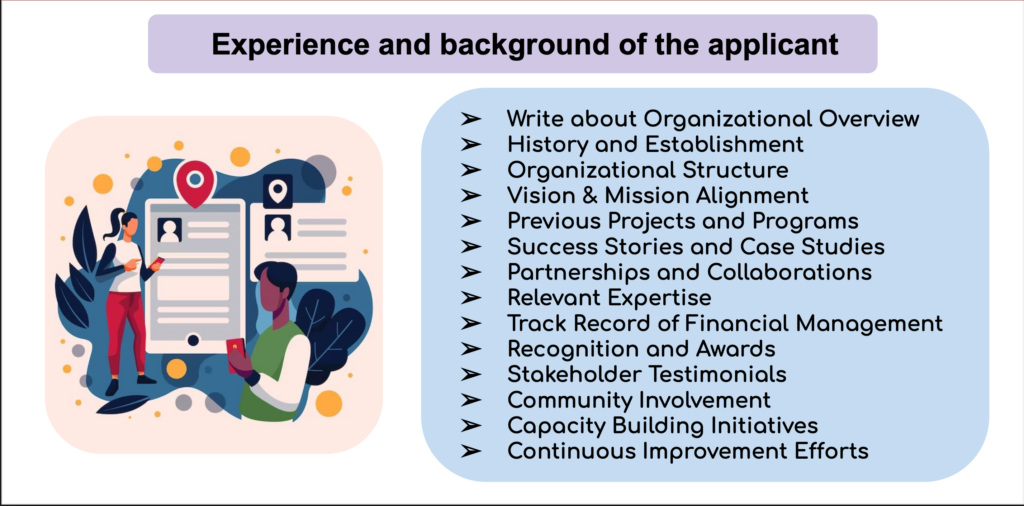
5. The Reason Why the Host Institution is Interested in the Scheme
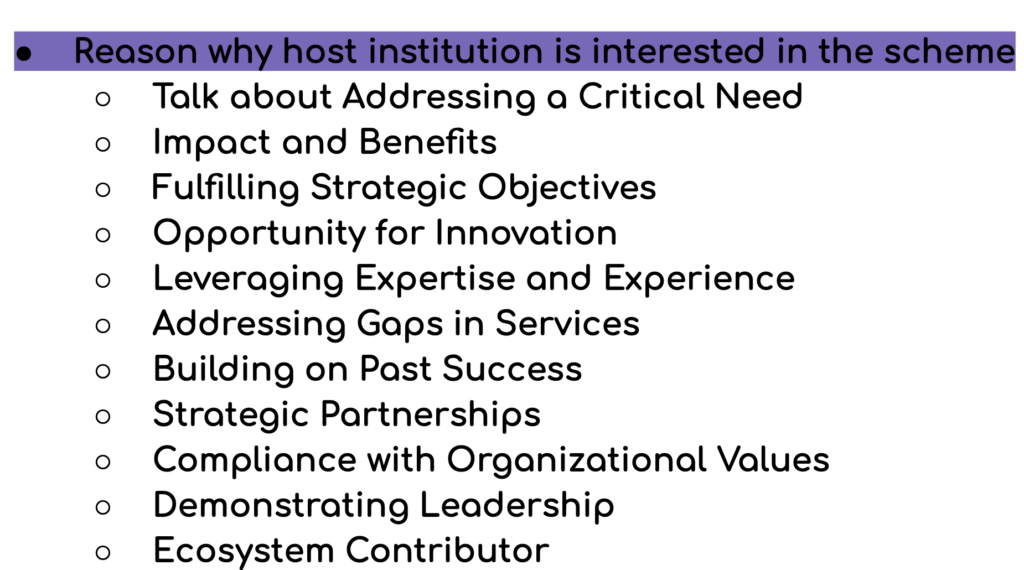
To write any grant, you need to be either part of an organization or the organization itself can submit a grant proposal. While writing the grant proposal, you should talk about addressing a critical need of the given topic. The impact and benefit that would be created after fulfilling strategic objectives.
What would be the opportunity for innovation that the organization would achieve? How does the applicant plan on leveraging expertise and experience? What are the current gaps in the services? There are a few questions that should be addressed.
It would be best if you also pointed out your strategic partnerships, which could be beneficial for the implementation of the project. Apart from this, compliance with organizational values and demonstrating leadership are ecosystem contributors, if any.
6. Support (Expertise/ Infra) Offered By the Host Institution
It would be best if you talked about the resources or infrastructure availability that are required for the smooth implementation of the project. It is not always about the staff or an expert but also the resources and infrastructure capabilities of the host institute.
If your organization has a research department, what available tools, software, Journals, etc, should be mentioned?
7. Targets and Deliverables for the Project Period
Every project should have a proper timeline. In this section, you will mention the step-by-step guide and implementation time frame of the project. You can divide the targets and deliverables into phases; this way, it is easier to understand and implement as well.
You will give a clear idea of what the targets that you are aiming for and when they will be achieved. You will talk about how you will utilize the funds that would be granted, and this has to be presented in a tabular format. It would help if you were very specific and practical with the numbers, as we also have to submit a review report each quarter.
8. The Action Plan for Implementation of the Project
Now that you have provided targets and deliverables, you will write about the action plan. In this, you will represent the complete implementation process. This implementation process should also be presented in the flowchart.
SOPs of implementation should also be written. Another aspect that should also be covered is – how we will reach our target beneficiary. What strategy or method would you follow?
9. Experience and Background of the Proposed Team, Board, and Other Officials
The proposal must have all the details about the people or experts who would be working on this project. As this is a financial grant, the organization that is providing the grant will go through the people who would be involved in the implementation.
It is expected that the profiles of the experts are familiar with the project topic. Has experience and a greater research background. You will talk about how the team is capable of implementing this project or Scheme. The expertise of the team and the total list of the team members with their names and specifications of the post. Other things that are an add-on are to provide a team structure and reporting flow.
10. Number and Diversity of Partners Proposed
When we talk about diversity and the proposal, it is not about the demographics. It is about the expertise, speciality, and positions of the partners. It would help if you had partners who are relevant to the title of the Scheme. It is also important to note down any past collaboration events or programs that were implemented.
The chances of getting a grant increase when you have a relevant partner. It has also been seen by collaborating with another organisation your grant is more likely to be sanctioned.
11. Location, Benefits, and Suitability of the Implementation Center
Most of the time, grant schemes are based on specific locality. So it might depend on where you are situated. You can mention the advantages of the location, such as nearby MSME, research laboratories, IT Centre, or whatever that is relevant to RFP. Show the Peer to peer benefits and engagement.
For example, if you are located in the city where it majorly manufactures, Textile and also exports Textile. It would be more relevant for you to apply for grant schemes in the Textile sector. This way, you have the benefit of location, which could further strengthen your claim.
12. Proximity to Other Similar Projects / Centres (if any)
This section is optional but necessary if found relevant.
If any relevant projects are being implemented, this way, you ensure that other projects are relevantly running in the region. Give a short Outlook and information about the nearby centers implementing the same or similar project. But that’s not all. Showcase how you can be different from them or how you can contribute to them and boost the impact/ implementation.
13. Sector Focus (if any)
This section has already been covered in the executive summary and the overall strength and suitability of the applicant section. But in this, you will write in deep about earlier experiences and implementation. You might have worked on several projects under several sectors. But here, you will mention only the implemented project of the sector in focus.
Talk about your vision of the sector in focus. Also, align the available infra and human resources which are suitable. This is optional but could be mentioned in a very short paragraph.
14. Usage of the Grant-In-Aid
As we come towards the end, most of the sections that you will write will be about the budget. Major questions about how you are planning to implement the budget should be answered. It would be easier if you mentioned the usage of the grant in aid in a phase implementation manner.
Describe the budget that would be required for tools, allowances, fees, etc. Write the description of the whole budget in sentences. Whatever you mention in this section would be treated as a policy so you should be very careful.
15. Sources of Financial Sustainability (if necessary)
It is also necessary to mention about financial sustainability of the project. It would help if you also mentioned the sustainability of the project after the end of the Scheme. But before this section, you should define the possible revenue streams that you have planned.
What would be the phases of activation?
Also, it would be best if you have an idea about future possibilities is an estimation of the revenue (at least 3 years)
16. Budget
The last section of writing a grant proposal is dedicated to budget. It would help if you were very thorough while writing the budget. The budget budget section should have a detailed discussion about operational expenditure, capital expenditure, and revenue.
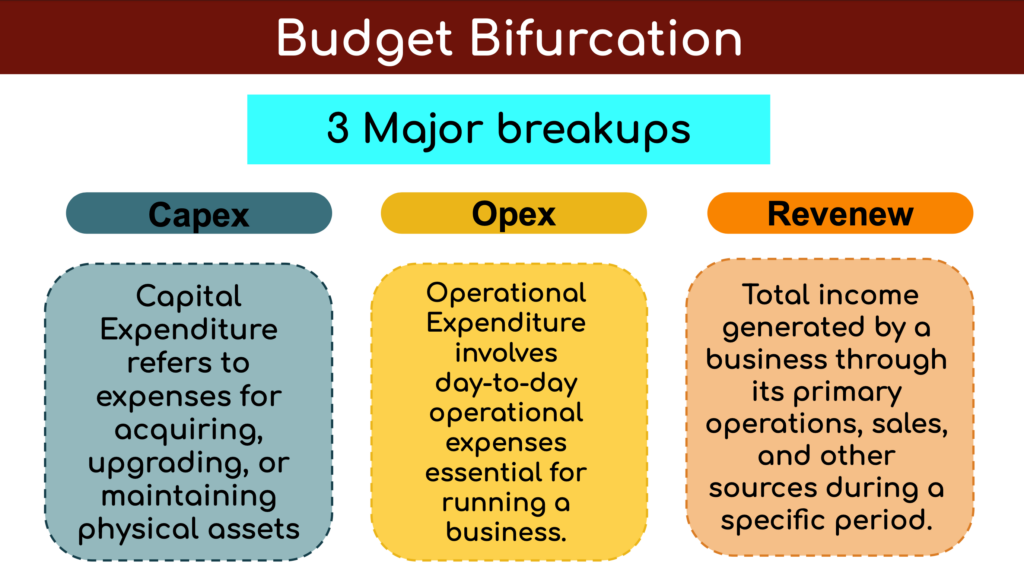
Opex – operational expenditure involves day-to-day operational expenses which are essential for running the project.
Capex – capital expenditure to expenses for acquiring, upgrading, or maintaining physical assets.
Revenue – total income generated by a business through its primary operation, operations, sales, and other sources during a specific period.
It can be little confusing if you’re writing this for the very first time but to help me out. I have attached an Excel sheet of budget that you can use.
Overall Thoughts
Now that you have written your grant proposal next thing for you to do a submit it and wait. It is not likely that your proposal will get accepted fast. The organization that would be providing the grant would go through your proposal and very depth. If it is an RFP, they might have received many other grant proposals from other organizations and applicants. So it depends on them to choose the best proposal.
You should always keep on submitting proposals to as many as you can that are relevant to you. I wish you all the best and would be very happy if this article helps you get the grants. I will be active in the comment section if any doubts or help is needed.
